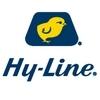Check out what is new in Poultry Industry
Find the best technical articles, forums, and videos on Poultry Industry at Engormix. Enter now and interact with the world's largest agricultural social network.
Introduction Salmonella is a major foodborne pathogen commonly associated with raw poultry and poultry products causing 1.2 million illnesses, 23,000 hospitalizations and 450 deaths, annually in the United States [1]. Between 2009 and 2015, 15% of the top 5 pathogen-food category pair out-breaks were attributed to Salmonellosis associated with chicken consumption [2]. To reduce the prevalence of Salmonella , poultry processors apply antimicrobial...
Comments : 0
Recommendations: 0
Background Antimicrobial resistance (AMR), is one of the biggest threats to food safety and considered a One-Health issue with the potential of spreading to other countries since resistant pathogens do not recognize boundaries [1, 2]. Recently, we have shown the transmission of AMR E. coli among chickens, humans, and the poultry environment [3, 4]. Globally, antimicrobial agents are used in food animal production to ensure good health and productivity of the animals [5–7]....
Comments : 0
Recommendations: 0
.jpg&w=3840&q=75)

Mycotoxin detection: VICAM builds a stronger and more sustainable future for food
Suggested link
1. Introduction Poultry producers started to raise their commercial chickens indoors as of the 1950s for better disease control, protection from predators, and to integrate their management measures for the production of uniform products [1]. Modern breeding plans and conventional raising systems have enabled mankind to produce broiler chickens with more than 2kg body weight in 35 days [2]. Although the selection for higher growth rate and slaughter yield has dramatically...
Comments : 0
Recommendations: 0
Introduction Coccidiosis is an infectious disease of the intestinal tract of wild and domestic animals caused by different protozoa. These include but are not limited to Isospora, Neospora, Cryptosporidium, and Eimeria of the phylum Apicomplexa. Those parasites are widespread, especially where intensive production systems are used to raise livestock. They cause mortality, poor growth, and impaired performance. In addition to mortality and reduced growth, coccidiosis also affects...
Comments : 0
Recommendations: 1
INTRODUCTION Antibiotics used as growth promoters (AGP) have successfully controlled dysbiosis and enteropathogens for the past 50 years (1). However, the recent increase in worldwide non-AGP poultry production is challenging the industry in management, health, and animal welfare due to the increase of enteric and systemic diseases (2, 3). One of the most accepted theories of AGP mechanism is its role in reducing low-level inflammation (4) and immunologic stress (5) that can be...
Comments : 0
Recommendations: 1
1. Introduction Low pathogenicity avian influenza virus (LPAIV) subtype H9N2 is the most prevalent LPAIV in poultry in the world [1–3]. Although wild waterfowl are the natural host of avian influenza, H9N2 is a relatively uncommon subtype in wild birds. The first H9N2 virus in domestic poultry was isolated from turkeys in the 1960s in the United States of America (USA) and only sporadic reports from poultry were reported until the 1990s [4]. In the mid-1990s H9N2 was first...
Comments : 0
Recommendations: 0
1. Introduction Taste perception influences feed intake guiding nutrient choices [1,2]. It has been widely assumed that the sense of taste in avian species is not as accurate as in mammals, as they have fewer taste buds [3]. However, the ratio of taste buds to oral cavity volume in birds appears to be higher than in most mammals [4]. Recent behavioural and genomic studies have found that birds have a highly developed sense of taste [1,5,6]. Poultry possesses a...
Comments : 1
Recommendations: 0
Introduction
Aflatoxins (AF) are a major concern in poultry production and public health because of serious economic losses and health problems. AF contamination causes reduced feed quality and reduced animal efficiency either through poor conversion of nutrients or problems such as reproductive abnormalities. Aflatoxicosis in poultry also causes listlessness, anorexia with lowered growth rate, poor feed utilization, decreased egg production and increased mortality....
Comments : 0
Recommendations: 1
INTRODUCTION Spray-dried plasma (SDP) is a highly digestible protein ingredient rich in functional molecules, manufactured from animal blood collected from federally inspected slaughter facilities, and spray-dried to preserve the functionality of its components (Coffey and Cromwell, 2001). It is a diverse mixture of functional molecules consisting of immunoglobulins, albumin, fibrinogen, lipids, growth factors, enzymes, hormones, and other components...
Comments : 0
Recommendations: 1
I. INTRODUCTION Growing emphasis on environmental regulation requires global animal production to adopt strategies like feeding low CP diets to minimize nitrogen excretion. However, in some of the animal feeding studies, lowering dietary CP beyond a certain level showed undesirable effects on growth performance and carcass quality of broilers. A number of explanatory approaches is being debated as the possible reasons for the consequences of lowering dietary CP on broiler...
Comments : 0
Recommendations: 4
This study was aimed at assessing endogenous enzyme activities and utilisation of metabolisable energy by broiler chickens fed maize-based diets supplemented with phytase and carbohydrases. Birds were raised in cages in climate-controlled rooms. The jejunum and pancreas were collected at 10 and 24 d for analysis of endogenous digestive enzyme activities. Birds were also sampled at hatch and 24 d and analysed for gross energy, fat and crude protein contents. The data were used to calculate...
Comments : 0
Recommendations: 1
I. INTRODUCTION Xylanases have been used in the poultry industry for 30 years, initially to improve litter quality in wheat-based diets but later to also improve performance or reduce costs in wheat, corn, sorghum and barley based diets. It is widely accepted that these benefits are the result of the enzyme partly degrading the insoluble cell wall arabinoxylans to release the enclosed nutrients and the soluble arabinoxylans to reduce digesta viscosity, hence improving nutrient...
Comments : 0
Recommendations: 0


The Relevance of Starch-Protein Digestive Dynamics in Crude Protein-Reduced Broiler Diets
Suggested link
INTRODUCTION As a fungal secondary metabolite of the Aspergillus species, aflatoxin B 1 (AFB 1 ) is known to be the most toxigenic mycotoxin (Yunus et al., 2011). Feed contamination with AFB 1 has been a major feed safety concern due to its negative effects on growth performance, production, hepatic functions, and immune system in many livestock species (Ledoux et al., 1999; Yarru et al., 2009; Andretta et al., 2011; Grenier and Applegate,...
Comments : 0
Recommendations: 0
INTRODUCTION
Coccidiosis is an enteric disease caused by protozoa of the genus Eimeria that affects several animal species, including poultry. Eimeria multiplication in the intestinal epithelium leads to enterocyte destruction and severe tissue damage, which negatively affects poultry health and welfare status (1). Although difficult to predict, researchers have estimated that the loss in productivity induced by clinical and...
Comments : 0
Recommendations: 0


Mycotoxins semiannual survey of mycotoxin in feed in 2023 Taiwan - Second Half
Suggested link
Traditionally, Zn, Cu and Mn have been added to poultry diets in the form of inorganic salts, such as sulphate, to meet requirements and prevent deficiencies. The sulphate sources of trace minerals have low bioavailability, are highly water soluble and reactive in the feed and digestive tract (Ma et al., 2011). Hydroxychloride minerals (HyC) are a class of naturally occurring minerals with fully defined crystalline structure, where the crystal is held together by a series of covalent bonds...
Comments : 0
Recommendations: 0
Calcium is an important cation in chicken diets, being the most abundant element in the body of the chicken. Its functions include: mineralization of bones, blood clotting, enzyme activation, neuromuscular function, muscle contraction, and intracellular signaling. However, high dietary Ca is a limiting factor for phytase efficacy and the formation of insoluble Ca-phytate complexes decreases Ca and P availability. Furthermore, Williams (2005) has shown high dietary Ca concentration in the...
Comments : 0
Recommendations: 1
I. INTRODUCTION A recent on Australian sorghum by Selle et al. (2017) that sorghum produced in Australia is used almost exclusively for feed, especially cattle, pigs and poultry. The objective of the present study is to assess the response of broiler chickens to diets based on sorghum, when supplemented with a combination of enzymes, targeting different substrates. II. MATERIALS AND METHODS A total of 648 male and female Ross 308 broiler chickens was randomly...
Comments : 0
Recommendations: 0
Osteoporosis in laying hens is of health, welfare, and economic concern. During the onset of lay, hens rapidly build up the amount of medullary bone which has less structural integrity instead of structural bone formation (Whitehead, 2004). However, freedom of movement in cage free systems can stimulate structural bone formation to avoid mechanical failure which may improve bone health at the end of laying period. The aim of this study was to compare the ultrastructure features in laying hen...
Comments : 0
Recommendations: 0
.jpg&w=3840&q=75)

Mycotoxin detection: VICAM builds a stronger and more sustainable future for food
Suggested link
1. Introduction Commercial poultry production is associated with a variety of environmental, technological, nutritional and biological/internal stressors which are responsible for decreased productive and reproductive performance and compromised health [1,2]. A great body of recent information clearly indicates that very often overproduction of free radicals, compromised antioxidant defences and oxidative stress are the leading causes of the detrimental consequences of...
Comments : 0
Recommendations: 0
The Poultry Research Foundation, in conjunction with WPSA-Australian Branch, cordially invites you to the 33rd Australian Poultry Science Symposium at University of Sydney, Camperdown Campus.
The Australian...
Comments : 0
Recommendations: 0









.jpg&w=3840&q=75)




.jpg&w=3840&q=75)














